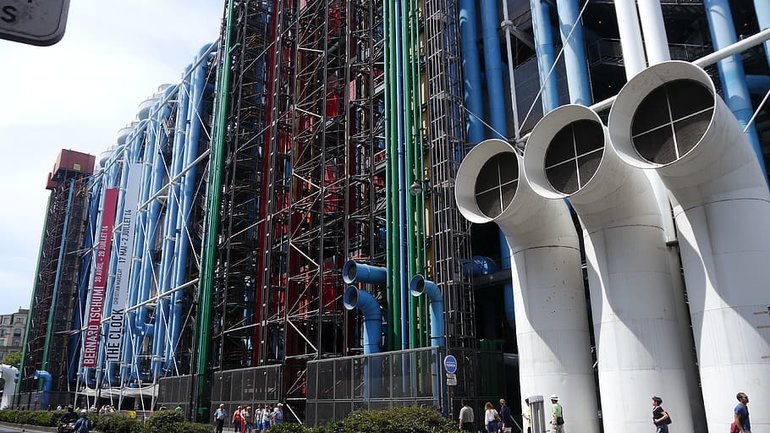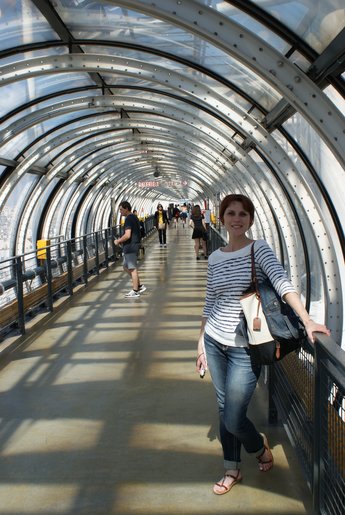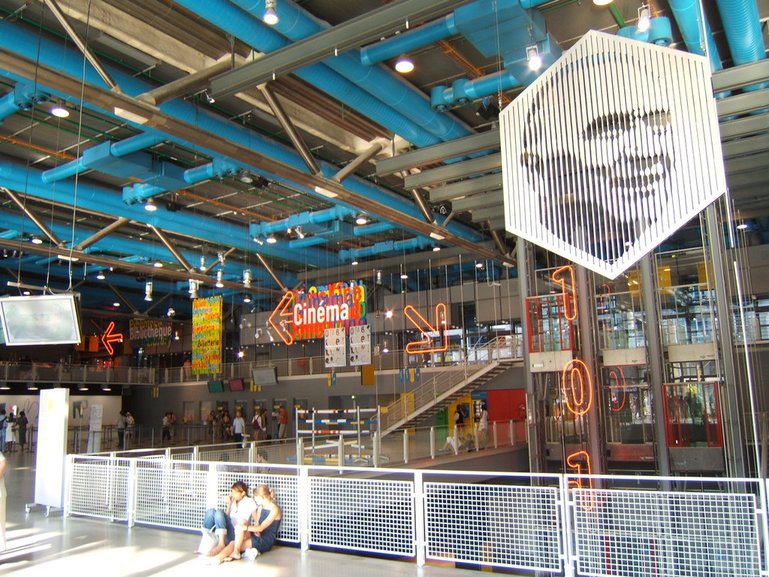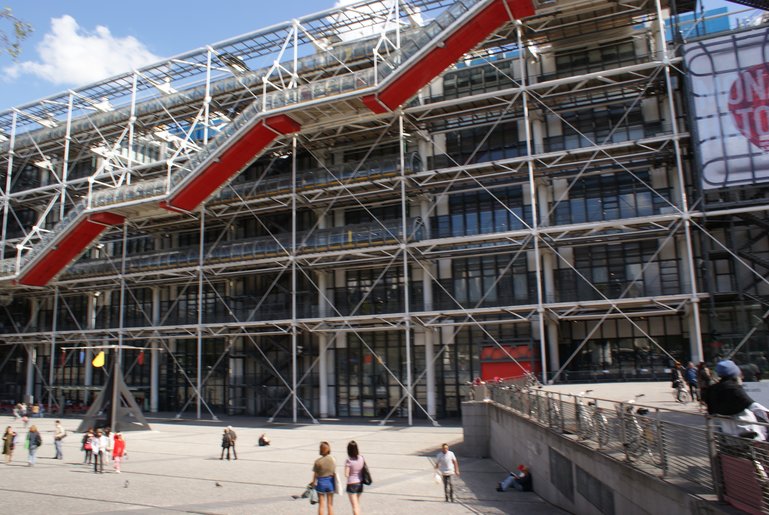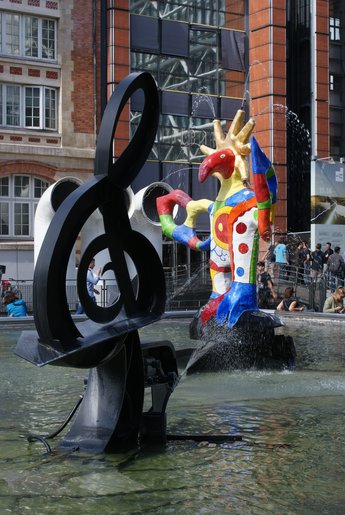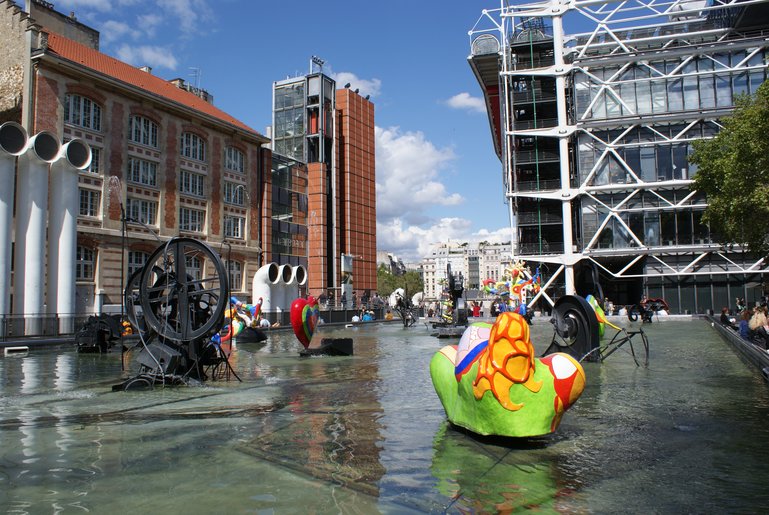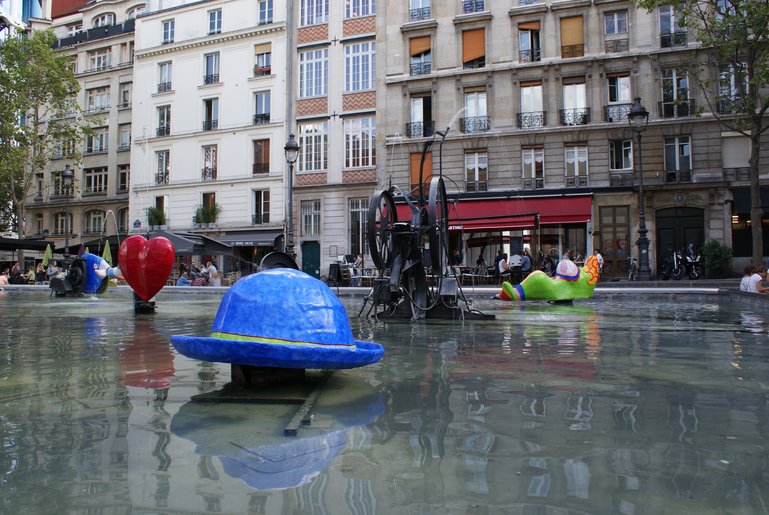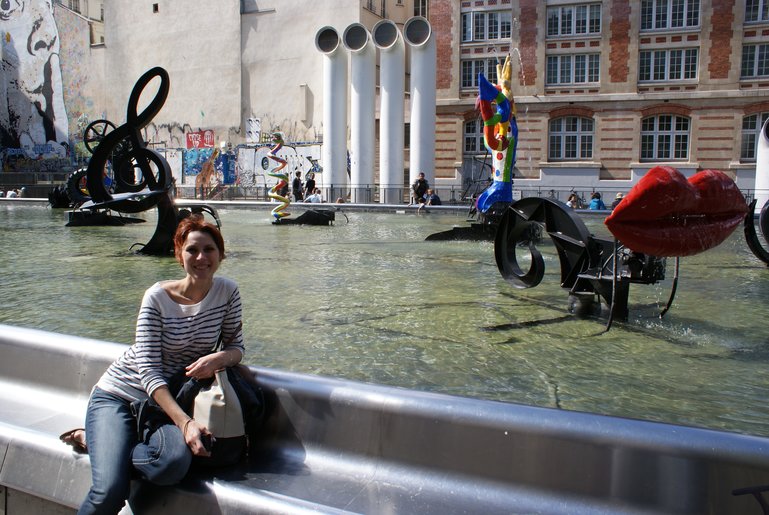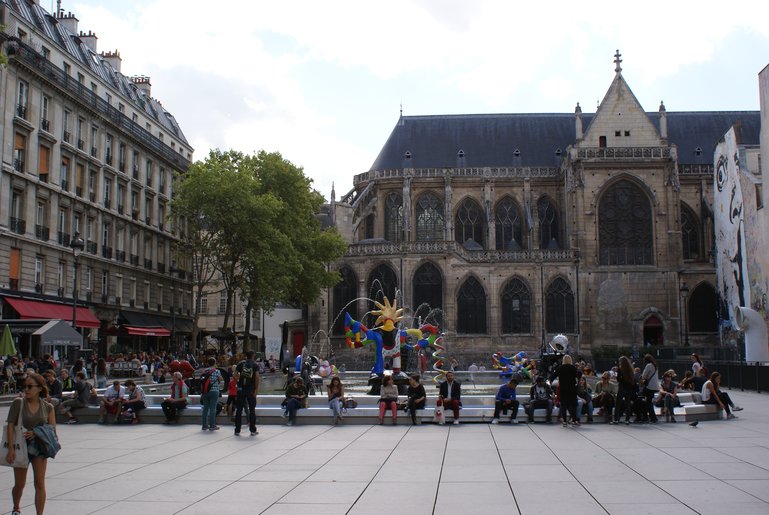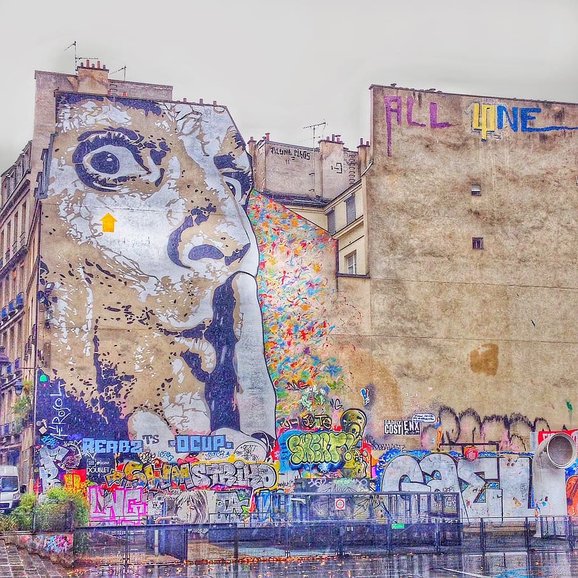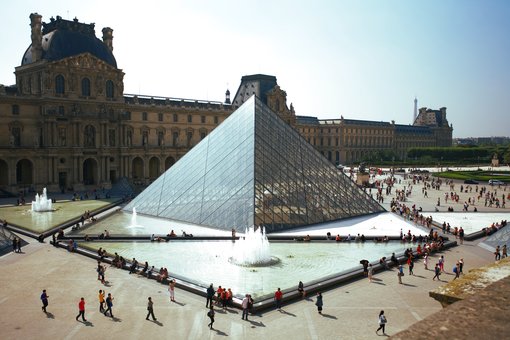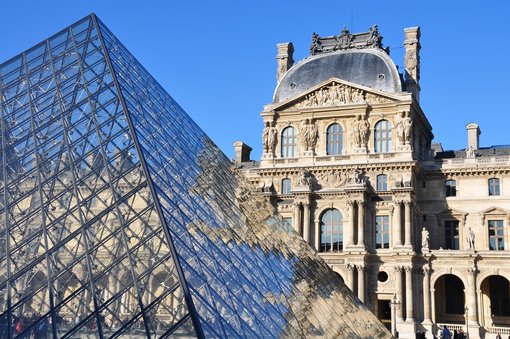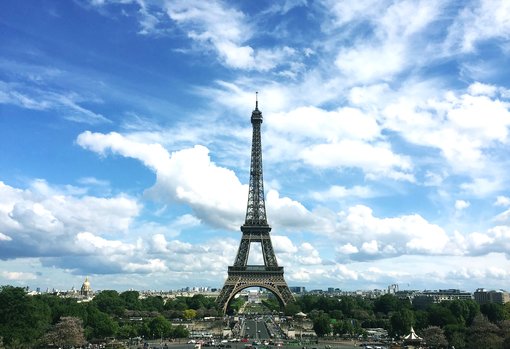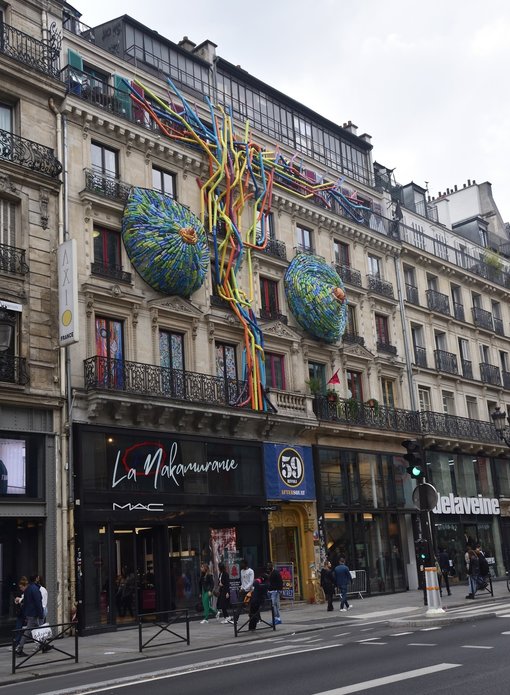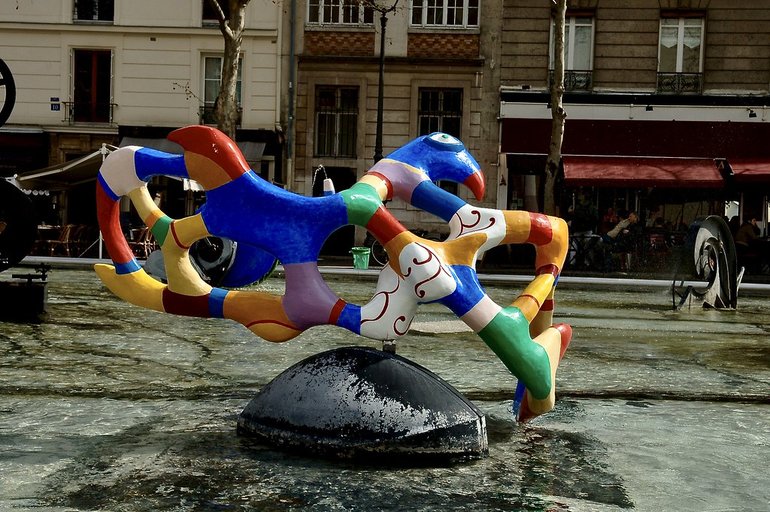
Stravinsky Fountain
In the heart of Paris, not far from the Louvre and the Ile de la Cité, near Les Halles in the 4th arrondissement, you can find high distinctive and remarkable construction: the Centre Pompidou (the Centre national d'art et de culture Georges-Pompidou) and the Stravinsky Fountain.
To begin with, I would like to remind that Georges Pompidou served as both Prime Minister and President of France from 1969 until his death in 1974.
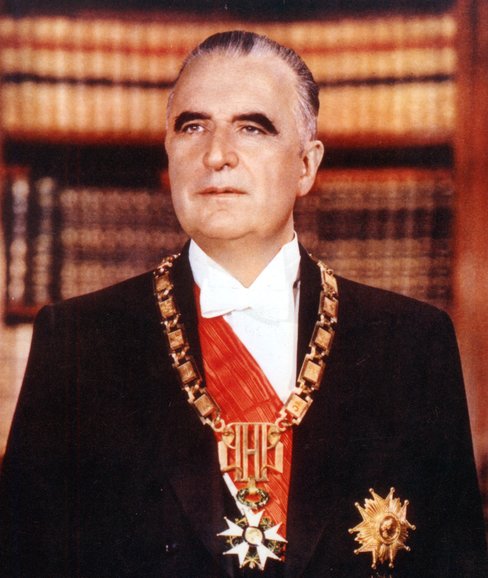
Georges Pompidou – President of France from 1969 until his death in 1974
The idea of developing a center for contemporary art was proposed by Georges Pompidou.
The Centre Pompidou.
Place Georges-Pompidou, 75004
Admissions : from 5€ to 25€
Skip the line tickets + guided tour : price depends on group size
On the first Sunday of every month, admission to the permanent collection and the Galerie des enfants is FREE for everyone.
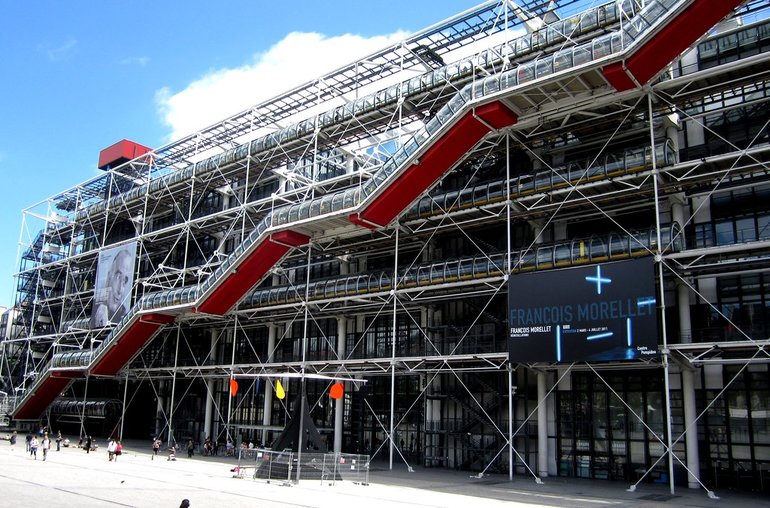
The Centre Pompidou
The Centre Pompidou is located in one of the oldest neighborhoods in Paris and was designed by British architect Richard Rogers and two Italian architects, Renzo Piano, and Gianfranco Franchini.
The Centre Pompidou is the largest art center in Europe, houses extraordinary collection of the Musée national d'art, as well as an exhibition hall of contemporary Avant-Garde art, a performance theatre, a conference room, and a public library, with seating for up to 2,200 people.
It also hosts iconic modern and contemporary art exhibitions.
Also, the center has the perfect for short break café le Central designed by the Spanish designer Jaime Hayon and prestige cocktails and dinner restaurant Georges with spectacular architecture, designed by Dominique Jacob and Brendan McFarlane.
The modern building, which looks like a factory, is made of glass and metal, and is framed by multi-colored pipes, is completely unique.
The strong color of the pipes is a prominent feature of the Pompidou Center's architecture.
Four colors — blue, yellow, green, and red — enliven its facades and outline its structure in accordance with the architects' color code:
Blue for airflow (air conditioner)
Yellow for electricity
Green for water
Red for pedestrian traffic (escalators and elevators)
The idea of moving all systems outside the building was to create more space that could be used for various projects and events. This included ventilation, electricity, water, elevators, and escalators.
In addition, you will see a huge mechanical escalator known as a “caterpillar” that is planned to be used as a vertical outdoor passageway. This provides a service at all levels and transports the visitors upwards. The glass escalator offers one of the best views of Paris.
Parisians and tourists visit the center not only to appreciate and enjoy art, but also to socialize, go for a walk, or relax.
Logo of the Centre Pompidou

Logo of the Centre Pompidou
I would like to draw your attention to the logo of the Centre Pompidou , designed by Jean Widmer.
Five horizontal black lines alternate with white lines representing the different levels of the building and black zigzag stripes symbolize the caterpillar.
This minimalistic graphic logo replicates the facade of the building.
Stravinsky Fountain
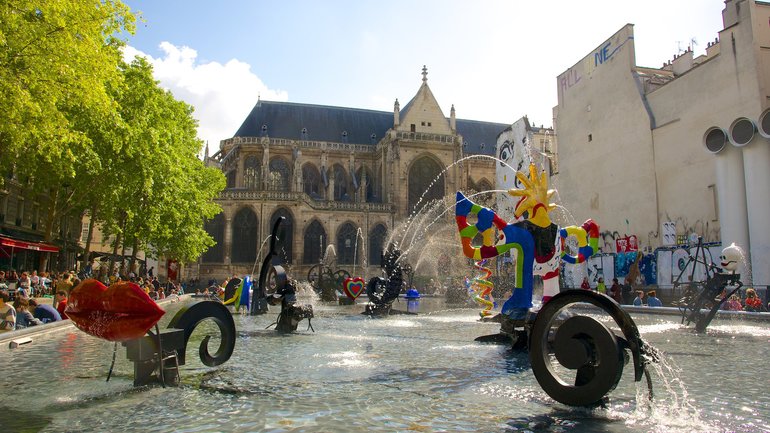
Stravinsky Fountain
The Stravinsky fountain is ornamented with sixteen abstract sculptures, moving and spraying water, representing the works of the great classical music composer, Igor Stravinsky.
The whimsical sculptures were created by Swiss sculptor Jean Tinguely, who represents kinetic art, and his wife Niki de Saint Phalle, a French theatrical artist, sculptor, and proponent of new realism.
Who is Igor Stravinsky?
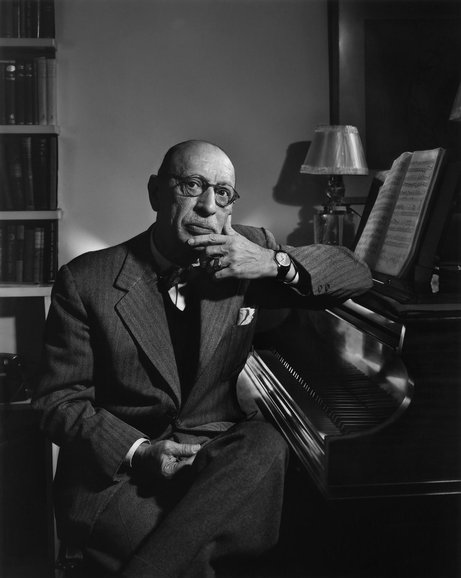
Igor Stravinsky
Igor Stravinsky was a famous Russian composer who left Russia before World War I and lived in Paris for many years.
He is one of the most significant figures in 20th-century world musical culture and is well-known for using a lot of musical experimentation in his works.
His creative artistic work includes operas, ballets, symphonies, solo instrumental concertos with the grand orchestra, and chamber and vocal music.
The Parisian authorities named a square and a decorative fountain after Stravinsky in honour of and sincere appreciation for his outstanding work.
The idea of the creation of the Fountain.
In 1970, President Georges Pompidou proposed that the French composer and conductor Pierre Boulez found and direct the Institute for Research in Music and Sound (IRCAM), which would specialize and focus on avant-garde and electro-acoustic music.
Moreover, in 1978, the city of Paris launched an extensive project to renovate and revitalize the Les Halles district, which involved the opening of pedestrianized streets, squares, and academic works of creative art.
The Stravinsky Fountain was part of a sculpture program that included the construction of seven contemporary fountains with sculptures in different locations across the city.
According to Pierre Boulez, only Tengueli's artwork could brighten up the area around the Center Pompidou.
In October 1981, Mayor of Paris Jacques Chirac announced that a new fountain, named after the Russian composer Igor Stravinsky, would be built next to the Center Pompidou, and Jean Tinguely and Niki de Saint Phalle were chosen to design the decorative fountain.
The Stravinsky Fountain cannot be confused with anything else: sixteen bright extraordinary figures move and release jets of water along with music from Stravinsky's most famous works.
At first glance, the figures appear absurd and strange. But what makes this fountain so unique?
A series of these notable sculptures link to Igor Stravinsky's music, closely associated with dance, Russian folk melodies, and fairytales.
The figurines represent a children's fairytale book filled with Russian folk stories:
The “clown's hat” is a reference to the famous ballet “Pétrouchka”, written for the 1911 Paris season of Sergei Diaghilev's Ballets Russes company.
The “Nightingale” from the opera based on a fairy tale is located next to the “Elephant.”
Chamber opera-ballet “Le Renard” is represented by a sculpture called “The Fox”.
The Firebird from “L'Oiseau de feu”, a ballet orchestra concert. It was composed for Sergei Diaghilev's Ballets Russes' Paris season in 1910.
There are “Spiral” and “Diagonal”, “Treble Clef” and “Ragtime”, “Snake” and “Frog”.
“Love” sits next to “Life” and “Death”, and there is a bright red “Heart” in the center of the fountain.
The Stravinsky Fountain was respectfully dedicated on June 19, 1983, and official celebrations were held at the Museum of Modern Art in its honor. It is one of the most controversial attractions in Paris.
I assumed avant-garde sculptures weren't delightful for everyone. Many people felt they did not connect with the flaming 8th-century Gothic church of Saint Merry. But over time, the disputes subsided, and the fountain is now one of the most popular places for Parisians and guests of the French capital to relax.



